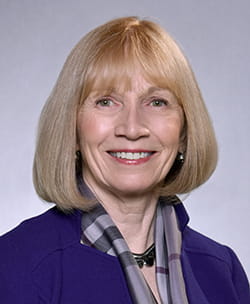
Thought Leadership
Brand Purpose: The New and Higher Order of Branding
Positioning has long been a linchpin of any branding campaign, but more recently it’s been dethroned by what Professor Alice Tybout terms a “higher order” — brand purpose, which is a way of making a brand stand out from its competition. “Positioning has always been about wanting your brand to stand for something in people’s minds,” said Tybout, who contributed a chapter on the subject to the recently released Kellogg on Branding. “Brand purpose is important for differentiating in a world where brands are in many ways similar.”
Options for determining a brand purpose run the gamut from function to emotion, Tybout explained. “For an everyday product such as a detergent, it could be about getting your clothes clean,” she said. “More emotionally, it might be about caring for your family. More abstractly, it could be about health and wellness, where clean clothes contribute to the wellbeing of your family and society. A company such as Unilever might link specific brands in their portfolio to initiatives about hygiene, which is way up there in terms of brand-position laddering. You can start with a benefit and work your way up to values, or you can go downwards and connect it to specifics about how it does things.”
Two factors are driving the growing importance of brand purpose, Tybout said. One is the increasing workforce influence of millennials, who are looking for a more meaningful way to earn a living. “They look for it in what they consume to some degree, but they also look for it where they work,” she said. “The next-generation workforce wants to know what good they’re doing. If you want to attract employees or customers who are millennials, you might be missing something if you haven’t thought about purpose.”
The second factor, Tybout said, is that we’re in an always-on age when it comes to social media. “Brands struggle to have news value that will sustain them and involve them in an ongoing conversation,” she said. “If I tell you how safe Volvo is, that’s great, but there’s not any more to talk about. However, if I tell you about how Volvo is operating to serve the larger goal of saving lives and helping people beyond merely making cars, that’s different. It gives you a basis for an ongoing conversation, whereas if you stick really close to your product features, there’s not as much for someone to pass along in terms of your company. It enriches the discussion.”
All of that said, establishing brand purpose has its pitfalls — chief among them is that you’ve now set a standard your customer will expect you to meet consistently. Starbucks ran into that problem when it encouraged its baristas to talk about race and when two African-American men were arrested for trespassing in a Philadelphia location while waiting for a friend. “Starbucks has allowed their store managers some freedom in implementing things that are adapted to the local community, and perhaps they hadn’t standardized the criteria enough to specify what was and was not allowed,” said Tybout. “Can people come in and sit? You can go too far, and you can fail to go far enough in having the organization behave in a manner that underpins the brand.”
Given that, what should companies take into account when deciding whether or not to publicly establish their brand purpose? “It’s not for all brands,” Tybout said. “It’s very powerful internally for the workforce to understand how their products and services connect with people’s higher-order goals in life. It can be a powerful differentiator. But it can also be limiting. With Patagonia, not everyone is an avid environmentalist, and you have to be okay with that because to live a brand purpose, you’ll take a stance, as Patagonia did in suing the Trump administration. You’re not authentic if you don’t do some of those things that might have a downside. Otherwise, your purpose is just vacuous. It’s fluff. Meanwhile, other brands are sought out just to do a job. Other than being socially responsible about deforestation, for example, I don’t care about what Procter and Gamble’s purpose is when buying paper towels. They don’t need to tell me much about it. They can have it on their website for anyone who’s passionate about it, but most people aren’t going to be affected by that.”
Therein lies the balancing act of brand purpose, Tybout said. “It’s kind of like Goldilocks. When do you get it just right?”
Image credit: Marble cathedral by Javier Vieras under CC BY 2.0 / Cropped from original |
Alice M. Tybout is the Harold T. Martin Professor of Marketing. She served as chairperson of the Marketing Department 2004-2006. Professor Tybout teaches in the MBA and Executive MBA programs. In addition, she is the academic director and faculty for Kellogg Executive Education's Consumer Marketing Strategy program and the Kellogg on Branding. She also has taught at the University of Chicago, INSEAD in Fontainebleau, France, and at Chulalongkorn University in Bangkok, Thailand. |
Download a Brochure >
Spaces are limited. Register today.
Kellogg on Branding
Utilizing a blended learning approach from the thought leaders at Kellogg, learn how branding can help you build a solid and enduring business while gaining new insights into the importance and value of a strongly differentiated brand.
Upcoming Sessions
|
May 12-23, 2025 Start: May 12 at 8:30 AM End: May 23 at 12:30 PM
LOCATION:
|
$7,950 Special Live Virtual Discount: When registering, use code VIRTUAL20 in the "Affiliation ID" box to save 20% on the upcoming live virtual session. |
|
|
September 29 - October 3, 2025 Start: September 29 at 1:00 PM End: October 3 at 12:15 PM
LOCATION:
Click here for Executive Education's COVID-19 health and safety protocols |
$9,950 Fee includes lodging and most meals for in-person sessions. |



